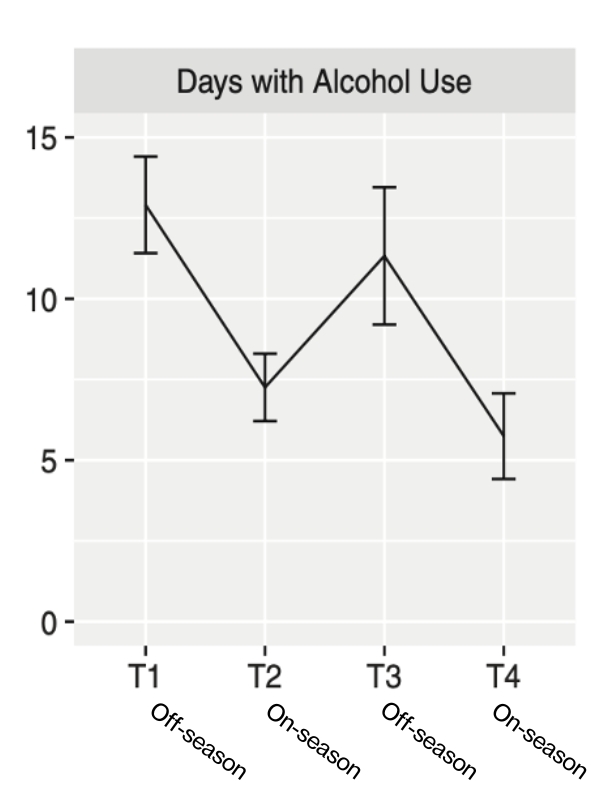Wildland Firefighters: Seasonal Trends in Substance Use
The seasonal stressors faced by wildland firefighters lead to increased rates of binge drinking and tobacco use throughout the year.

Read Time: 3 minutes
Published:
Firefighters are our first and last line of defense against wildfires. Wildland first responders include engine crews, hand crews, hotshot crews, helitack crews, and smokejumpers. All face grueling conditions and extreme stressors.
Due to the nature of wildland fire, most firefighters work seasonally with the majority of their hours and overtime occurring in the summer months. Wildland firefighters pay starts at $15 per hour, with limited opportunities to boost this base salary. Many of these firefighters struggle to make ends meet. Wildland firefighters make a large portion of their income in overtime and hazard pay. Consequently, the compensation setup encourages them to take on greater risks and adopt a more dangerous life, often working while exhausted. Pay is just one of the of factors that makes it challenging for the Forest Service to hire and retain wildland fighters.
Some wildland firefighters turn to drugs and alcohol to cope with the intense stress that comes with the job. In 2024, Kenneth Scott and colleagues conducted surveys with wildland firefighters, both before and after the fire season, to explore differences in tobacco use, alcohol consumption, and sugar intake between their working and off-work seasons.
The researchers showed that 78% of wildland firefighters engaged in binge drinking, while 52% used smokeless tobacco products at any point throughout the year. These rates were higher than those reported by other first responders in the United States, including the rates of substance use among structure firefighters.

The graph above illustrates average alcohol use trends over the last 30 days before and after the 2018 and 2019 fire seasons. Although alcohol use remained consistently high, it increased during the off-season compared to the fire season. Conversely, smokeless tobacco use peaked during the fire season and decreased during the off-season.
Scott and colleagues deduce that stress management, social belonging, and access may explain why tobacco use is higher during fire season and alcohol use is higher during the off season. During fire season, access to alcohol is restricted, and its consumption is typically prohibited during assignments. Conversely, smokeless tobacco is permitted and often serves as a stress reliever. In the off-season, alcohol becomes a means of social bonding.
These findings underscore the seasonal stressors faced by this workforce. Efforts to prevent substance use among wildland firefighters must account for the changing environments they navigate annually.
Databyte via Kenneth A. Scott, Kaitlin C. Wingate, Kathleen N. DuBose, et al. The wildland firefighter exposure and health effect (WFFEHE) study: cohort characteristics and health behavior changes in context. Annals of Work Exposures and Health, 2024.



